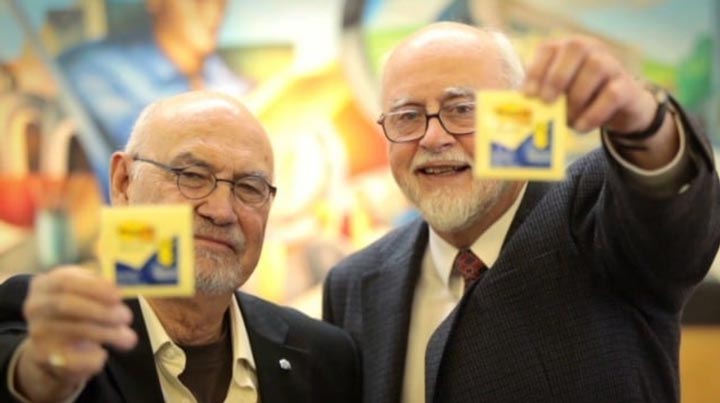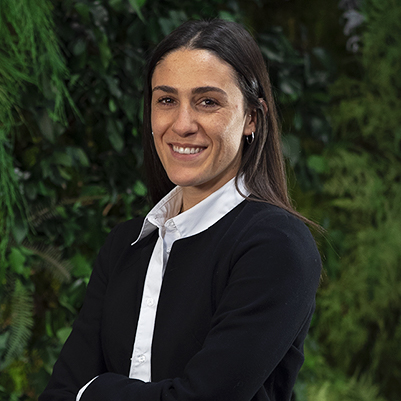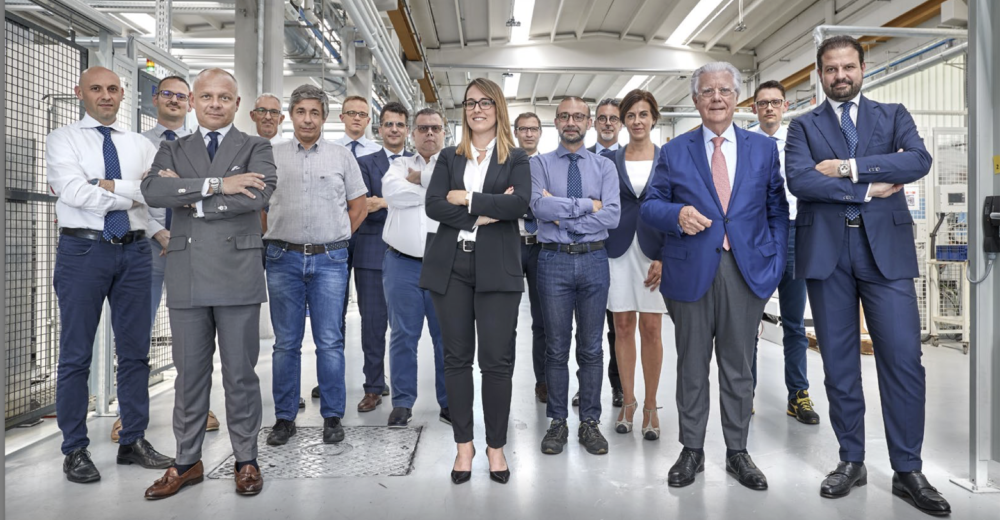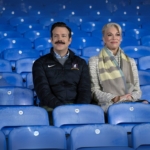Innovation doesn’t happen (only) in R&D

Indice
What determines the success of a starred restaurant? Strange question, you might think, for an article about innovation and its connection with research and development. However, the answer seems simple: it is obvious that the difference is made by the chef! Isn't he the one who invents the dishes that are served? It is clear, therefore, that the success is due to the chef and his creations! We're sorry to disappoint you, but that's not exactly the case. Indeed, the only certainty, perhaps, is just the opposite: a chef who makes mistakes in his creations decrees the failure of the restaurant, but the chef alone is certainly not enough to guarantee its success.

And it’s not just us saying it. It’s said by a starred chef: Marco Pierre White, who in 1994 became the first Englishman to receive Three Michelin Stars and, at 33, was the youngest in history, and held this record for 8 years.
Here’s what Marco Pierre White answers to the question:
“Among my best meals at a restaurant there is none that has been technically great, since the most important aspects of a restaurant are first the environment in which you spend the meal, the service and, only finally, the food and the bill.”
Therefore, it is not the chef who makes a restaurant great, but it is the restaurant itself that changes and evolves over time into a great restaurant, great in all its constituent elements.
In fact, it is true that the Michelin guide assigns stars to restaurants and not to chefs, although we improperly read in trade magazines of “starred chefs” (and we too have used that term just above).
In short, although the chef generates new dishes and new flavors (conceiving them, creating them, testing them and improving them), in fact these alone do not guarantee an unforgettable evening. A starred restaurant is a very complex system, of which the chef is only a part, albeit an important one, and whose success is determined by all the elements that compose it and bring value to the customer, making the experience relevant.
In fact, if you think about it, when you remember an unforgettable evening spent at a restaurant, many details come to mind: the clinking of the dishes, the scents and aromas, the taste of the dishes, the background music, the relaxed atmosphere, your companions, the kindness of the staff, the colors of the walls, the warm details of the furniture and perhaps, finally, even the bill.
Starred Restaurants, Post-it!: Innovation Processes That Work
And now we come to innovation. In a starred restaurant, the chef is the equivalent of the research and development of a company – his technical office – the function that designs and creates new innovative products and services, but if he is the only one in charge of creating innovation, it may not be enough to ensure that this really meets the customers’ demand for value. On the contrary, his approach of starting from the product or service, conceived and developed entirely in the laboratory, without ever relating directly to the market to understand in depth where the value for the customer lies, is often one of the main causes that move away from the hoped-for success: the biggest failures of innovation consist precisely in launching solutions on the market that nobody is interested in.
For a new product or service to be successful, it must appeal to the market, and this happens if it solves a problem for the people who buy it.
But too often, technical departments design products and services focused on lists of requirements indicated by channel partners, and not on what they could have learned in an analysis of the market and customer needs.
Companies that operate like this are just like restaurants that bet everything on the chef: by doing so they neglect everything else, without understanding that the real value that the customer seeks in a restaurant lies in the need to spend a pleasant evening.
To this is added a second problem that concretizes the risk of failure in an innovation process entrusted only to the research and development department, namely that of over-focusing on what one knows how to do: it is more likely that one will focus on the opportunities that one knows how to face with current skills, rather than on those that should be addressed. And, instead, most of the time it would be the latter to offer the best chances of success!
In fact, those with a certain expertise play their best cards to maximize the results they can achieve by focusing on what they do best, often continuing to improve products or services along the same dimensions, even when the results achieved are, for the market, already satisfactory.
The result is a customer who is overserved, a product which is too expensive and does not add new value to the customer or even an innovation which has no value as a product.
To clarify this concept, let’s look at what happened to 3M when it developed the Post-it!, which we all now recognize as a disruptive innovation, but which was not born as such.

It was 1968 when Spencer Silver, a researcher at the multinational 3M, working in the “Polymers for Adhesives” program at the 3M Central Research Laboratories invented the glue that is the basis of the famous adhesive sheets. The company has always had a tradition of periodically reviewing its products to try and improve them. “3M was putting together a group of people who seemed to be productive in developing new types of stickers,” says Silver, with the idea that “as long as you were making new things, everyone was happy. Of course, they had to be new, patentable molecules.”
And that’s what Silver did, creating a sticker that lightly adhered to surfaces but didn’t stick permanently. The problem was that nobady, including Silver, had any idea of what use to be made of this new adhesive which, contrary to what one expected from an adhesive, did not create a strong and lasting bond with the surfaces it met.
It was only the intuition of Arthur Fry, another 3M employee, that made sense to the new sticker in 1974, 6 years after Silver’s invention, and invented the Post-It! As a product that responded to a need, to solve a problem that frustrated him deeply..
Fry, every Wednesday evening practiced with the church choir and used small pieces of paper to mark the hymns that would be sung in the next service. But inevitably on Sundays, when everyone in church stood up or Fry had to communicate with the other members of the choir by gestures, he would distract from the placement of the bookmarks, and one unwise move would fly them away. He needed a bookmark that would stick to the paper without damaging the pages. Having attended a seminar done by Silver on the new sticker, and having a problem to solve, the identification of the value that the new glue could bring to people was immediate: so the Post-it! was born.
To obtain new successful products and services, the innovator must come out of his solitude, seek forms of participation, develop the ability to make better decisions through comparison to ensure the quality of analysis and development of an idea.
In one person hardly all the answers, all the visions, all the angles reside.
We will say more: a holistic approach to innovation, involving not only the R&D department but also other business functions and external sources, can contribute significantly to the achievement of economic and human sustainability goals which are often the longer-term goal for companies.
Collaborative innovation promotes economic sustainability
Innovation can come from any department of the company: each department has experience and expertise to use to stimulate innovation. When different business functions are involved in the innovation process, it opens the door to new ideas and perspectives that may not emerge from the isolation of a single department. When people from different departments work together on a project, synergies are created that lead to innovative results and higher chances of success, because they develop more complex solutions that are harder to replicate for the competition.
Collaboration can take place at all levels of the company, even in a transversal way and creating different groups for tasks and responsibilities.
In addition, an innovative process with a collaborative approach promotes economic sustainability: the involvement of marketing, sales and finance teams, for example, can help ensure that new solutions are aligned with customer needs and sustainable business models.
This cross-functional collaboration helps to develop products and services that more effectively meet the market, improving long-term profitability, thus benefiting the economic sustainability of innovation, but also of the company.
Open innovation in connection with the entire business ecosystem
In addition to internal departments, external sources can be an inexhaustible source of ideas and knowledge.
Suppliers, for example, can identify innovative ideas on materials, production processes and finished products: a technology provider may suggest new software that improves the efficiency of the company, or a materials supplier may suggest new solutions to reduce production costs.
Innovation can come from customers, who can provide important feedback on the company’s products and services, suggesting improvements or new products. This possibility of dialogue between the customer and the company, which can be realized in many forms (contest, social network dialogue, contests, etc.) not only creates a stronger bond with i customers and strengthens the brand identity, but also contributes to a corporate image based on transparency and attention to customer needs.
Finally, innovation can come from sources outside the corporate world. For example, universities and research organizations can provide innovative ideas through the research and development of new technologies. Industry associations and conferences can provide a forum for the sharing of ideas and information exchange between different companies.
Collaboration with suppliers, universities, research organizations and other companies in the field broadens the pool of expertise and stimulates new perspectives. This collaborative approach to innovation opens the door to new ways of tackling complex challenges and can lead to surprising discoveries that contribute both to economic sustainability and a more dynamic and interesting business environment, in which employees feel stimulated and inspired to seek new ways, thus also valuing all aspects of human sustainability.
Innovation as a structured and collaborative process
Working with hundreds of companies, Lenovys has seen how often the unintended effects of innovation processes that rely solely on the professionalism and competence of technical offices lead to a high risk of failure.
To manage innovation in a collaborative way and create value relationships with external actors, it is necessary to build an innovation process that allows the various functions involved to understand what contribution they are expected to make, how they should interact with other business areas and what intervals are to be respected to ensure the correct timing of the process.
To help companies in this path, Lenovys has developed a structured innovation process that allows you to reduce the risks arising from innovation entirely managed by the R&D department or the Innovation Manager and each year, the principles and logic underlying the High Impact innovation process are addressed within the Executive Master Impact Innovation, in a training room where dozens of entrepreneurs and managers are gathered.
The next meeting will be held in Milan next October: there are still some seats in the classroom if you want to be one of us!
Articolo a cura di:

Cecilia Angioletti
Manager
Act as a consultant, supporting clients in the reorganization of business processes with the aim of continuous improvement, product innovation, process and service.
Experience in coordinating international research projects and manufacturing process modelling skills.
Since 2015, Cecilia has been working on international innovation management and high-impact innovation projects to transform strategies, processes and customer tools, generating sustainable business results and value.

Massimiliano Salerno
Manager
MANAGER LENOVYS
He has a decade of experience as an entrepreneur and manager and has covered several roles in the field of innovation for the Regione Toscana.
He works on high impact innovation projects as a leader and trainer of interdisciplinary teams of clients, accompanying them towards the identification and implementation of innovation and business projects.
Read more
Prossimi eventi










